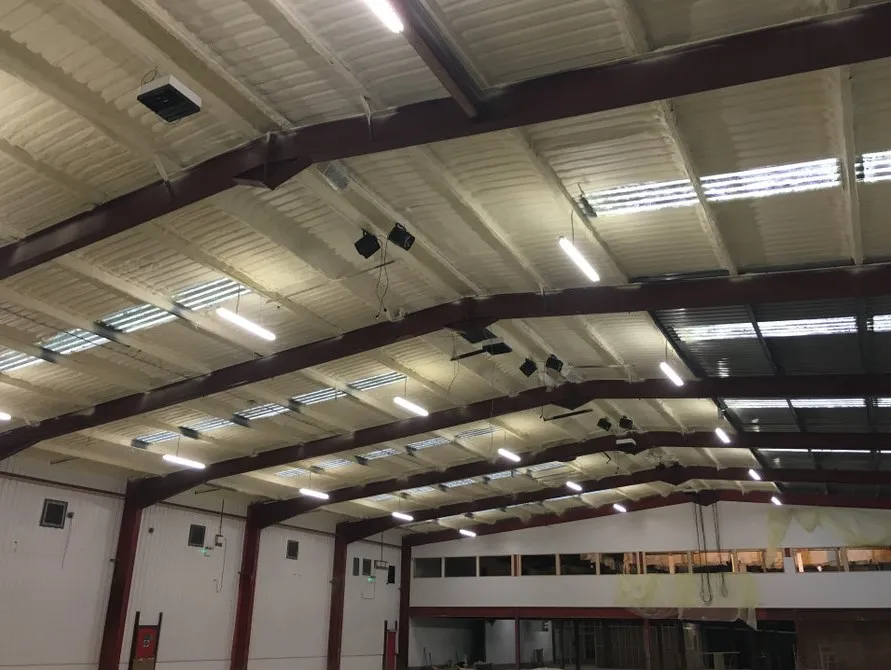Choosing the proper insulation for your commercial Rochester, MN building is one of the most effective ways to improve energy efficiency, reduce costs, and enhance comfort. With several types of insulation available, deciding which is best for your specific needs can take time. In this guide, we’ll break down the types of commercial insulation, helping you understand their uses, benefits, and applications. Whether you’re a business owner in Rochester, MN,or nearby areas, this article will give you the information needed to make an informed decision.
Why Insulation Matters for Commercial Properties
Commercial properties face unique challenges regarding energy management, comfort, and indoor air quality. The proper insulation can lead to a significant reduction in energy bills by keeping heating and cooling systems efficient. For businesses in Minnesota, where winters can be harsh and summers can get quite hot, sound insulation is essential to maintaining consistent indoor temperatures while minimizing energy costs. Proper insulation also controls moisture, prevents mold growth, and improves overall indoor air quality—all crucial factors for keeping employees and customers safe and comfortable environment.
Types of Commercial Insulation
Let’s review the most common types of commercial insulation solutions. Each has unique characteristics and is suitable for different types of commercial settings.
1. Closed-Cell Spray Foam Insulation
Overview
Closed-cell spray foam insulation is a high-performance option for commercial properties, offering excellent thermal resistance and moisture control. Made from polyurethane, this foam type expands after spraying, sealing cracks and gaps effectively.
Benefits
- High R-Value: Closed-cell spray foam insulation has a high R-value (up to R-7 per inch), providing superior thermal insulation compared to other materials.
- Moisture and Vapor Barrier: It effectively prevents moisture from seeping through, which is crucial for areas prone to humidity and condensation.
- Structural Strength: Closed-cell spray foam also adds strength to the building structure, which can be advantageous in commercial settings.
Applications
This insulation is often used in metal buildings, warehouses, and commercial properties where superior thermal resistance and moisture control are required. It’s ideal for sealing gaps in hard-to-reach areas, reducing air leakage, and providing a durable insulation solution.
2. Fiberglass Batt Insulation
Overview
Fiberglass batt insulation is one of the most widely used insulation options. It consists of flexible fiberglass sheets that can be installed between studs, beams, and joists.
Benefits
- Cost-Effective: Fiberglass batts are inexpensive and can be installed quickly, making them popular for many commercial projects.
- Fire Resistance: Fiberglass is naturally fire-resistant, adding a layer of safety to commercial buildings.
Applications
This type of insulation is commonly used in office buildings, retail spaces, and industrial facilities with open cavities to insulate. It works well in walls, ceilings, and floors that do not require extreme moisture control.
3. Blown-In Attic Insulation
Overview
Blown-in attic insulation is made of loose fibers, often fiberglass or cellulose, and is blown into spaces using a specialized machine. It is beneficial for insulating attics and hard-to-reach spaces.
Benefits
- Event Coverage: Blown-in insulation fills gaps and spaces more evenly than traditional batts, improving energy efficiency.
- Quick Installation: This insulation type is easy to install in large areas quickly, reducing labor time and disruption.
Applications
Blown-in insulation is ideal for attics, crawl spaces, and areas where installing traditional batts is impractical. It’s particularly beneficial in commercial buildings with irregularly shaped or hard-to-reach areas needing insulation.
4. Mineral Wool Insulation
Overview
Mineral wool, also known as rock wool or stone wool, is made from volcanic rock and other minerals. It is available in batts and boards and provides excellent fire resistance and soundproofing.
Benefits
- Fire Resistance: Mineral wool can withstand temperatures above 1,000°F, making it an excellent choice for facilities that need enhanced fire protection.
- Soundproofing: It also offers excellent acoustic insulation, making it a top choice for commercial buildings that require noise control, like theaters or office spaces.
Applications
Mineral wool is typically used in areas where fire safety and noise control are priorities, such as between floors, walls, and ceilings in commercial properties. It’s a common choice for schools, hospitals, and office buildings.
5. Intumescent Paint
Overview
Intumescent paint is a unique type of insulation that expands when exposed to high temperatures, providing fire resistance to structural components. While not traditionally an insulation material, it is integral to fire safety insulation.
Benefits
- Fire Safety: Intumescent paint adds an extra layer of protection to steel and wood structures, helping to prevent collapse during a fire.
- Space-Saving: Unlike traditional insulation, intumescent paint does not add bulk, making it useful in tight spaces.
Applications
Intumescent paint is commonly used in commercial buildings where fire safety is critical, such as warehouses, parking garages, and manufacturing facilities.
6. Rigid Foam Board Insulation
Overview
Rigid foam board insulation consists of polystyrene, polyisocyanurate, or polyurethane panels. These boards are lightweight and easy to install and provide high R-value insulation.
Benefits
- High Thermal Resistance: Foam boards provide excellent insulation per inch, making them useful in areas with limited space.
- Versatile Application: Rigid boards can be used above and below grade, offering moisture resistance and durability.
Applications
This insulation is ideal for use in walls, roofs, and foundations. It’s often applied to the exterior of commercial buildings to create a continuous insulation barrier, which helps minimize thermal bridging and energy loss.
7. Reflective or Radiant Barrier Insulation
Overview
Reflective insulation, also known as radiant barriers, is made from reflective aluminum foil and is often used to reduce radiant heat transfer. It’s usually installed in attics or unconditioned spaces.
Benefits
- Reduces Heat Gain: Reflective insulation helps minimize heat gain, making it especially useful in hot climates where keeping cooling costs down is a priority.
- Lightweight and Easy to Install: It’s lightweight and can be installed quickly, reducing the need for complex installation processes.
Applications
Reflective insulation is frequently used in commercial buildings with large roof surfaces, such as warehouses and storage facilities, to reflect heat and improve energy efficiency.
Choosing the Right Insulation for Your Commercial Property
The appropriate insulation type for your commercial building depends on various factors, including design, local climate, budget, and energy efficiency goals. Here are some key considerations:
- Climate: In cold climates like Minnesota, insulation with a higher R-value is beneficial for keeping heat in during the winter.
- Moisture Control: Closed-cell spray foam and rigid foam boards are excellent for moisture-prone areas.
- Fire Safety: Mineral wool insulation and intumescent paint offer high levels of fire resistance, which may be crucial for certain commercial buildings.
- Noise Control: Mineral wool is an excellent option if noise reduction is essential, such as in an office or hospital.
Benefits of Professional Installation
While there are many types of insulation, a professional installation ensures that your chosen material delivers optimal performance. Improperly installed insulation can lead to gaps, poor coverage, and reduced energy efficiency, critical issues in commercial settings. At Foam Worx Insulation, we bring years of experience working with various types of insulation in Rochester, MN , and the surrounding areas, ensuring you get a solution that fits your building’s needs.
Ready to Improve Your Building’s Energy Efficiency?
Selecting the proper insulation is critical to cutting energy costs and ensuring a comfortable environment for your employees, customers, or tenants. At Foam Worx Insulation, we provide tailored solutions to meet your needs, whether spray foam, blown-in insulation, or fire-protective intumescent paint. Contact us today to learn how we can help insulate your commercial property effectively.
Reach out via phone at (507) 407-6688, visit our website at foamworxinsulation.com, or email us at [email protected] to discuss your project and get a free estimate. We’re here to help make your commercial space more efficient, safe, and comfortable.
FREQUENTLY ASKED QUESTIONS
1. What types of insulation are best for commercial buildings?
Depending on the building’s needs, the best insulation types for commercial buildings include closed-cell spray foam, fiberglass batts, blown-in attic insulation, mineral wool, rigid foam boards, and reflective insulation.
2. How does insulation help lower energy costs for my commercial property?
Insulation helps reduce energy costs by keeping indoor temperatures stable reducing the load on heating and cooling systems.
3. Which insulation type is most fire-resistant?
Mineral wool and intumescent paint offer excellent fire resistance and are suitable for enhancing safety in commercial settings.
4. Can insulation also improve soundproofing?
Yes, mineral wool insulation is particularly effective at reducing noise between rooms or floors in commercial buildings.




